Related Research Articles
The history of anime can be traced back to the start of the 20th century, with the earliest verifiable films dating from 1917. Before the advent of film, Japan already had a rich tradition of entertainment with colourful painted figures moving across the projection screen in utsushi-e (写し絵), a particular Japanese type of magic lantern show popular in the 19th century. Possibly inspired by European phantasmagoria shows, utsushi-e showmen used mechanical slides and developed lightweight wooden projectors (furo) that were handheld so that several performers could each control the motions of different projected figures.
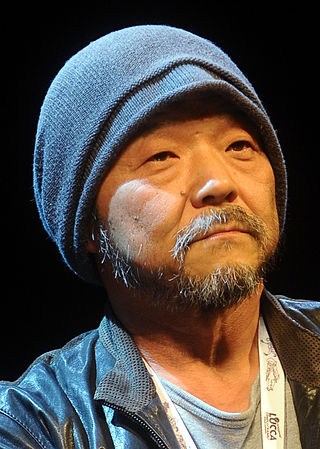
Mamoru Oshii is a Japanese filmmaker, television director and writer. Famous for his philosophy-oriented storytelling, Oshii has directed a number of acclaimed anime films, including Urusei Yatsura 2: Beautiful Dreamer (1984), Angel's Egg (1985), Patlabor 2: The Movie (1993), and Ghost in the Shell (1995). He also holds the distinction of having created the first ever OVA, Dallos (1983). As a writer, Oshii has worked as a screenwriter, and occasionally as a manga writer and novelist. His most notable works as a writer include the manga Kerberos Panzer Cop (1988–2000) and its feature film adaptation Jin-Roh: The Wolf Brigade (1999).
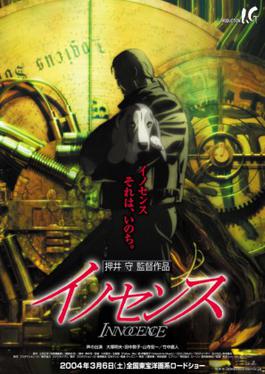
Ghost in the Shell 2: Innocence, known in Japan as just Innocence, is a 2004 Japanese animated cyberpunk film written and directed by Mamoru Oshii. The film serves as a standalone sequel to Oshii's 1995 film Ghost in the Shell and is loosely based on the manga by Masamune Shirow.
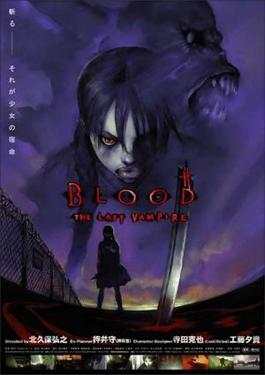
Blood: The Last Vampire is a 2000 Japanese animated action horror film directed by Hiroyuki Kitakubo, written by Kenji Kamiyama and produced by Production I.G. The film premiered in theaters in Japan on November 18, 2000.
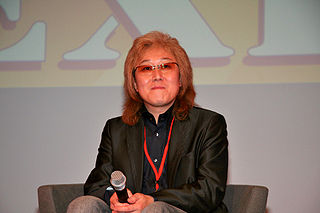
Kenji Kawai is a Japanese music composer and arranger. Known as one of the biggest names in the soundtrack world, he has worked on a wide range of mixed media productions, including anime, TV shows, films and video games. Among his credits are Toei's Kamen Rider Heisei Generations Forever, Tsui Hark's Seven Swords and Young Detective Dee: Rise of the Sea Dragon; Wilson Yip's Ip Man; Mamoru Oshii's films The Red Spectacles, StrayDog: Kerberos Panzer Cops, Ghost in the Shell, Mobile Police Patlabor, the OVA and TV anime adaptations of Vampire Princess Miyu, The Sky Crawlers and Avalon; the anime adaptations of Rumiko Takahashi's Ranma ½ and Maison Ikkoku; the live-action adaptation of Gantz and Hideo Nakata's films Ring, Ring 2, Chaos, Dark Water and Kaidan.

Mobile Police Patlabor, also known as Patlabor, is a Japanese science fiction media franchise created by Headgear, a group consisting of manga artist Masami Yūki, director Mamoru Oshii, screenwriter Kazunori Itō, mecha designer Yutaka Izubuchi, and character designer Akemi Takada.
A visual novel (VN) is a form of digital interactive fiction. Visual novels are often associated with the medium of video games, but are not always labeled as such themselves. They combine a textual narrative with static or animated illustrations and a varying degree of interactivity. The format is more rarely referred to as novel game, a retranscription of the wasei-eigo term noberu gēmu (ノベルゲーム), which is more often used in Japanese.
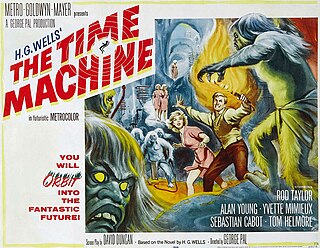
Time travel is a common theme in fiction, mainly since the late 19th century, and has been depicted in a variety of media, such as literature, television, film, and advertisements.

Science fiction is an important genre of modern Japanese literature that has strongly influenced aspects of contemporary Japanese pop culture, including anime, manga, video games, tokusatsu, and cinema.
The following is a glossary of terms that are specific to anime and manga. Anime includes animated series, films and videos, while manga includes graphic novels, drawings and related artwork.
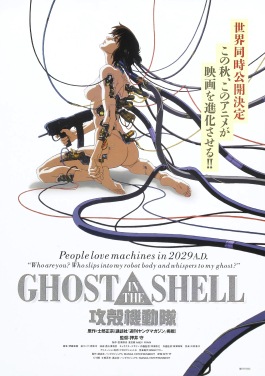
Ghost in the Shell is a 1995 adult animated neo-noir cyberpunk action thriller film directed by Mamoru Oshii and adapted by frequent Oshii collaborator Kazunori Itō. The film is based on the manga of the same name by Masamune Shirow. It stars the voices of Atsuko Tanaka, Akio Ōtsuka, and Iemasa Kayumi. It is a Japanese-British international co-production between Kodansha, Bandai Visual and Manga Entertainment, with animation provided by Production I.G.

Urusei Yatsura 2: Beautiful Dreamer is a 1984 Japanese animated fantasy comedy film written and directed by Mamoru Oshii. It is the second film in the Urusei Yatsura film series based on the manga of the same name by Rumiko Takahashi. Its predecessor, Only You, was also directed by Oshii. It was released in Japan on February 11, 1984, during the second season of the series.
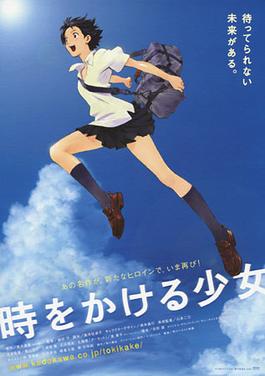
The Girl Who Leapt Through Time is a 2006 Japanese-animated science fiction romance film produced by Madhouse, directed by Mamoru Hosoda and written by Satoko Okudera. Distributed by Kadokawa Herald Pictures, the film is a loose sequel to the 1967 novel of the same name by Yasutaka Tsutsui and shares the basic premise of a teenage girl who gains the power of time travel and repeatedly relives the same day in a time loop, but with a different story and characters than the novel. Riisa Naka voices teenager Makoto Konno, who learns from Kazuko Yoshiyama, Makoto's aunt and the protagonist to the original story, that Makoto has the power to travel through time. Makoto begins using the time-leaps frivolously to fix problems. Riisa Naka later portrays Makoto's cousin, Akari Yoshiyama, the protagonist of the 2010 live-action film Time Traveller: The Girl Who Leapt Through Time, which follows a different story.

The Girl Who Leapt Through Time is a science fiction novel by Yasutaka Tsutsui. Originally serialized from 1965 to 1966, it tells the story of a high-school girl who accidentally acquires the ability to time travel, which leads to a time loop where she repeatedly relives the same day.

The Sky Crawlers is a Japanese novel series by Hiroshi Mori. First published by Chuōkōron-shinsha in June 2001 and spanning six books, it follows the journeys and tribulations of a group of young fighter pilots involved in dogfight warfare, and is set during an alternate historical period. The series is unlike other works by Mori, noted for his series of mystery novels. The series is illustrated by manga artist Kenji Tsuruta. The series was adapted into an animated film, a video game and a manga series.

Patlabor 2: The Movie is a 1993 Japanese animated science fiction political thriller film directed by Mamoru Oshii and written by Kazunori Itō, who also respectively directed and wrote Patlabor: The Movie. It was produced by Production I.G, Bandai Visual and Tohokushinsha.

All You Need Is Kill is a Japanese science fiction light novel by Hiroshi Sakurazaka with illustrations by Yoshitoshi Abe. The book was published in Japanese by Shueisha under their Super Dash Bunko imprint in December 2004, and was later released in English by Viz Media under their Haikasoru imprint. All You Need Is Kill follows a soldier named Keiji Kiriya, who, after dying in a battle with extraterrestrials, is caught in a time loop that makes him live the same day repeatedly, allowing Kiriya to improve his fighting skills.

Time Traveller: The Girl Who Leapt Through Time, originally released as Toki o Kakeru Shōjo, is a 2010 Japanese science fiction fantasy film directed by Masaaki Taniguchi and written by Tomoe Kanno. It is the fourth film based on the novel The Girl Who Leapt Through Time and is a sequel to the original 1983 film adaptation. The film stars Riisa Naka as the protagonist Akari Yoshiyama, daughter of the original story's protagonist Kazuko Yoshiyama. Naka previously voiced Akari's cousin, Makoto Konno, the protagonist of the 2006 anime adaptation, which followed a different story.
Isekai is a subgenre of portal fantasy. It includes novels, light novels, films, manga, anime, and video games that revolve around a displaced person or people who are transported to and have to survive in another world, such as a fantasy world, game world, or parallel universe without the possibility of returning to their original world. Isekai is one of the most popular genres of anime, and isekai stories share many common tropes – for example, a powerful protagonist who is able to beat most people in the other world by fighting. This plot device typically allows the audience to learn about the new world at the same pace as the protagonist over the course of their quest or lifetime. If the main characters are transported to a game-like world, the genre can overlap with LitRPG.
References
- 1 2 3 Langford, David (June 13, 2017). "Themes: Time Loop". In Clute, John; Langford, David; Nicholls, Peter; Sleight, Graham (eds.). The Encyclopedia of Science Fiction . London: Gollancz. Retrieved 18 July 2019.
- ↑ Klosterman, Chuck (2009). Eating the Dinosaur (1st ed.). New York: Scribner. p. 60. ISBN 9781439168486 . Retrieved 2 February 2013.
- ↑ García-Catalán, Shaila; Navarro-Remesal, Victor (2015). "Try Again: The Time Loop as a Problem-Solving Process in Save the Date and Source Code". In Matthew Jones; Joan Ormrod (eds.). Time Travel in Popular Media: Essays on Film, Television, Literature and Video Games. McFarland & Company, Inc., Publishers. p. 207. ISBN 9781476620084. OCLC 908600039.
- ↑ "Books: Life as a Trap". Time Magazine. 17 November 1947. Archived from the original on 3 February 2011.
- ↑ Smith, Ronald L. (March 8, 2010). Horror Stars on Radio: The Broadcast Histories of 29 Chilling Hollywood Voices. McFarland. ISBN 978-0-7864-5729-8 – via Google Books.
- ↑ "The Old Time Radio Club - The Illustrated Press (page 11)" (PDF).
- ↑ "Unknown v04n05 (1941 02) p.87". Internet Archive. February 1941. Retrieved 16 December 2023.
- ↑ Keller, Bill (23 April 1988). "A Movie Tribute for Stalin Generation". The New York Times. Retrieved 1 May 2015.
- ↑ Paula M. Block, Terry J. Erdmann, Star Trek: The Next Generation 365 (2012), §248.
- ↑ Stockwell, Peter (2000). The Poetics of Science Fiction (1st ed.). Harlow, England: Longman. pp. 131–133. ISBN 9780582369931.
- ↑ Peters, Lucia (November 16, 2020). "The Weird Part Of YouTube: The Making Of "No Through Road" And The Power Of Unanswered Questions". The Ghost in My Machine. Archived from the original on November 16, 2020. Retrieved November 16, 2020.
- ↑ Kok, Nestor (March 18, 2022). "Ghosts in the Machine: Trick-Editing, Time Loops, and Terror in "No Through Road"". F Newsmagazine . Retrieved March 18, 2022.
- ↑ S, Srivatsan (2021-11-25). "'Maanaadu' movie review: Simbu and SJ Suryah have a go at each other in this smartly-written film". The Hindu. ISSN 0971-751X . Retrieved 2024-06-05.
- ↑ Suryawanshi, Sudhir (2021-11-27). "Maanaadu movie review: Riveting take on time loop underlined by clever writing". The New Indian Express. Retrieved 2024-06-05.
- ↑ Meegan, Danny (January 21, 2022). "10 Craziest Doctor Who Time Loops". WhatCulture.com.
- 1 2 Jones, Steve (26 August 2018). "Revue Starlight ‒ Episode 7". Anime News Network . Retrieved 29 May 2019.
- ↑ "THE GIRL WHO LEAPT THROUGH TIME (2006)". Deptford Cinema . August 9, 2017. Retrieved 27 January 2020.
- ↑ "THE GIRL WHO LEAPT THROUGH TIME (2006) at Deptford Cinema". TicketSource . 9 August 2017. Retrieved 27 January 2020.
- 1 2 Walkov, Marc (2016). "The Girl Who Leapt through Time". Far East Film Festival . Retrieved 30 April 2020.
- ↑ "過去興行収入上位作品 一般社団法人日本映画製作者連盟". Eiren. Motion Picture Producers Association of Japan. 1983. Retrieved 30 April 2020.
- 1 2 Osmond, Andrew (29 November 2017) [30 September 2012]. "Edge of Tomorrow, and Kill Is All You Need". Manga UK. Archived from the original on 1 October 2018. Retrieved 18 September 2019.
- ↑ Kalata, Kurt (2019). "1996 – YU-NO: Kono Yo no Hate de Koi o Utau Shōjo". Hardcore Gaming 101 Presents: Japanese Video Game Obscurities. Unbound Publishing. pp. 108–109 (108). ISBN 978-1-78352-765-6.
- ↑ Eisenbeis, Richard (2013-04-19). "Steins;Gate Might Be the Best Anime I Have Ever Seen". Kotaku . Gawker Media. Archived from the original on 2016-08-24. Retrieved 2016-08-31.
- ↑ Douglass, Jeremy (2007). Command Lines: Aesthetics and Technique in Interactive Fiction and New Media. Santa Barbara, Cal.: University of California, Santa Barbara. pp. 333–335, 358. ISBN 978-0549363354 . Retrieved 29 November 2015.[ permanent dead link ]
- ↑ García-Catalán, Shaila; Navarro-Remesal, Victor (2015). "Try Again: The Time Loop as a Problem-Solving Process in Save the Date and Source Code". In Matthew Jones; Joan Ormrod (eds.). Time Travel in Popular Media: Essays on Film, Television, Literature and Video Games. McFarland & Company, Inc., Publishers. pp. 206–209. ISBN 9781476620084. OCLC 908600039.
- ↑ Batchelor, James (July 31, 2019). "Learn, reset, repeat: The intricacy of time loop games". GamesIndustry.biz . Retrieved July 31, 2019.